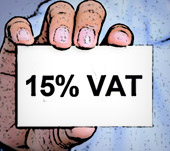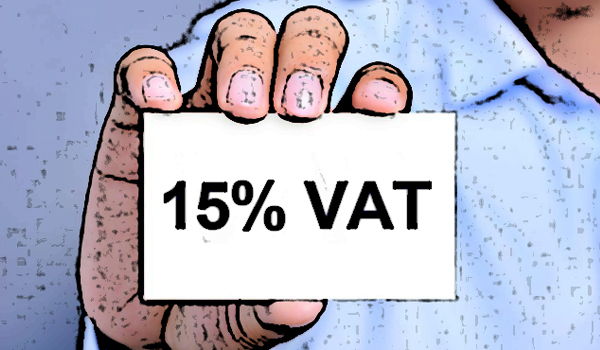 We all know that the new rate of 15% applies from 1 April 2018. It is however also important to note that even after 1 April there are circumstances where the applicable VAT rate will still be 14%, resulting in additional complexities and the necessity for systems that can deal with both rates for some time.
We all know that the new rate of 15% applies from 1 April 2018. It is however also important to note that even after 1 April there are circumstances where the applicable VAT rate will still be 14%, resulting in additional complexities and the necessity for systems that can deal with both rates for some time.
The following is important to note:
Transitional rules:
The transitional rules dealing with a VAT rate increase are contained in section 67A of the Value-Added Tax Act no. 89 of 1991 (the VAT Act).
- Supplies before 1 April 2018:
Goods (excluding fixed property way of sale) provided or services performed during a period prior to 1 April 2018 = VAT at 14% irrespective of the fact that an invoice for such supply may only be issued after 1 April 2018 and payment is received after that date.
- Supplies commencing before and ending on or after 1 April 2018 (Section 67A(1)(ii) of the VAT Act):
The following supplies are covered in this rule:
- Goods that are provided under a rental agreement;
- Services which are performed under an agreement or law that provides for periodic payments;
- Goods supplied progressively or periodically under an agreement or law that provides for the consideration to be paid instalments or periodically; and
- Goods or services supplied directly in the construction, repair, improvement, erection, manufacture, assembly or alteration of goods under any agreement or law that provides for the consideration to be paid in instalments or periodically.
Where these goods are provided or services are performed during a period that commences before 1 April 2018 and ends thereafter, then the vendor must apportion the value of the supply (i.e. VAT exclusive price charged) on a fair and reasonable basis between the supplies made before 1 April 2018 and supplies made on or after that date.
Value attributed to supplies made prior to 1 April 2018 = VAT at 14%
Value attributed to supplies made on or after 1 April 2018 = VAT at 15%
- Supplies made after 1 April 2018:
Generally, where supplies are made on or after 1 April 2018, such supplies will be subject to VAT at 15%.
Section 67A(2) of the VAT Act contains certain anti-avoidance rules (excluding sale of residential properties) that override the time of supplies provisions of section 9 of the VAT Act to prevent the following:
- Vendors taking advantage of the lower rate by triggering the time of supply rules in section 9 of the VAT Act during the period from when the increase in the VAT rate was announced (i.e. 21 February 2018) but before 1 April 2018, where the actual supplies of the goods or services are only made 1 April 2018.
- The anti-avoidance provisions will not apply where it is the normal business practice of the vendor to receive payments or to issue invoices before goods are provided or services are performed, for example, a professional body that customarily issues invoices to its members for annual subscriptions.
Specific transactions:
- Sale of residential property (Section 67A(4) of the VAT Act)
Section 67A(4) of the VAT Act provides for a concession in relation to the sale of residential property. This section applies to sales of the following types of residential properties:
- the sale of fixed property consisting of any dwelling together with land on which it is erected;
- any real right conferring a right of occupation of a dwelling;
- any sectional title unit where such unit comprises a dwelling;
- any share in a share block company that confers a right to or interest in the use of a dwelling;
- the sale of fixed property consisting of land for the sole or principal purpose of the erection by or for the purchaser of a dwelling as confirmed by the purchaser in writing; or
- the construction by a vendor carrying on a construction enterprise of any new dwelling.
A ‘dwelling’ is defined to mean, except where it is used in the supply of commercial accommodation, any building, premises, structure, or any other place, or any part thereof, used predominantly as a place of residence or abode of any natural person or which is intended for such use, including fixtures and fittings belonging thereto.
If the price of the sale or construction of such property was determined and stated in a sale agreement which was signed by the parties thereto before 1 April 2018, and the registration of transfer and payment will only take place on or after 1 April 2018, then VAT is payable at the rate of 14%.
- Commercial property:
There are no special transitional rules in relation to commercial property. The normal time of supply rule therefore determines the rate of VAT which will be applicable. Consequently, if the date of registration of transfer in the name of the purchaser is affected, and payment is made to the seller on or after 1 April 2018, VAT at 15% will be payable by the seller, irrespective of when the sale agreement was concluded.
- Lay-by agreements:
VAT at 14% for goods sold in terms of, or services supplied in relation to, a lay-by agreement which is concluded before 1 April 2018, provided a deposit is paid before 1 April 2018.
- VAT on importation of Goods:
The VAT rate applicable to the importation of goods will be the VAT rate when the goods are cleared for home consumption for customs purposes.
- Goods cleared on or after 1 April 2018 = VAT at 15%
(This will be the case even though the goods may have arrived in the country prior to 1 April 2018.)
- VAT on importation of Services:
The VAT rate applicable to imported services will be the VAT rate applicable at the EARLIER of
- the date an invoice is issued by the supplier or the recipient in respect of the supply; or
- the date any payment is made by the recipient in respect of the supply.
- Debts Written Off or Recovered:
If a vendor writes off a bad debt it is entitled to claim an input tax deduction. If the underlying supply was made prior to 1 April 2018 and the debt is written off after 1 April 2018 the question arises as to what VAT rate should be applied.
- Amount written off prior to 1 April 2018 – input tax deduction must be claimed at 14%.
- Important: That amounts recovered post 1 April 2018 would be subject to VAT at 15% despite the fact that the underlying supply was subject to VAT at 14%.
- Credit and debit Notes issued after 1 April 2018:
- For supplies of goods or services made prior to 1 April 2018 = VAT at 14%
- For supplies of goods or services made from 1 April 2018 = VAT at 15%.
Careful consideration and a prudent practical approach for these transactions will be required to avoid any penalties and interest.
If you have any enquiries, please contact Adri Britz at abritz@fhbc.co.za
Source Reference:
Section 67A of the Value-Added Tax Act no. 89 of 1991 (the VAT Act).
https://www.cliffedekkerhofmeyr.com/en/news/publications/2018/Tax/tax-alert-23-february-vat-rate-increase-what-vat-rate-should-be-charged.html
https://www.ensafrica.com/news/Surviving-the-transition-to-a-15-VAT-rate?Id=2961&STitle=tax%20ENSight
https://www.bdo.co.za/en-za/insights/2018/tax/the-increase-in-the-vat-rate-are-you-ready

